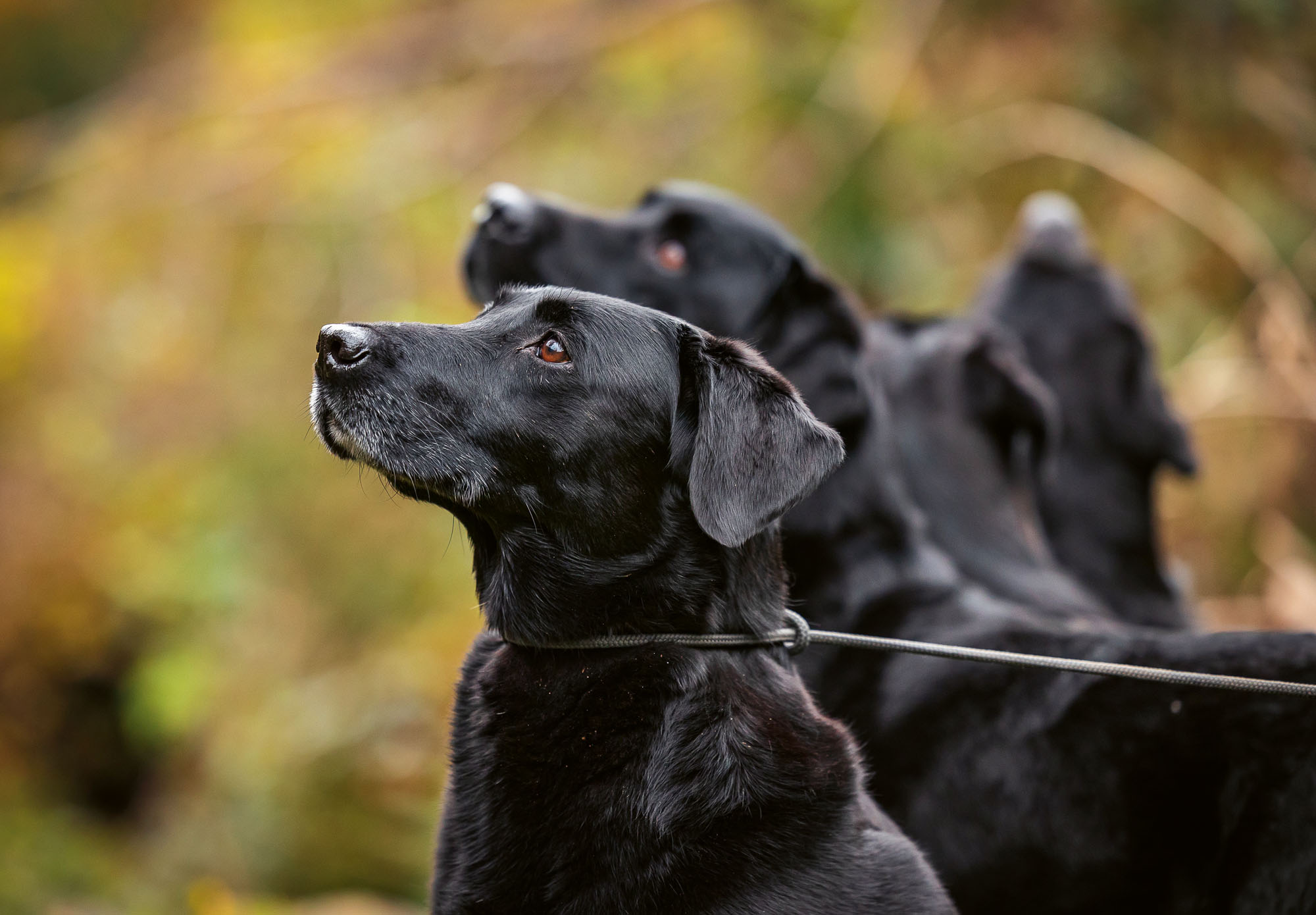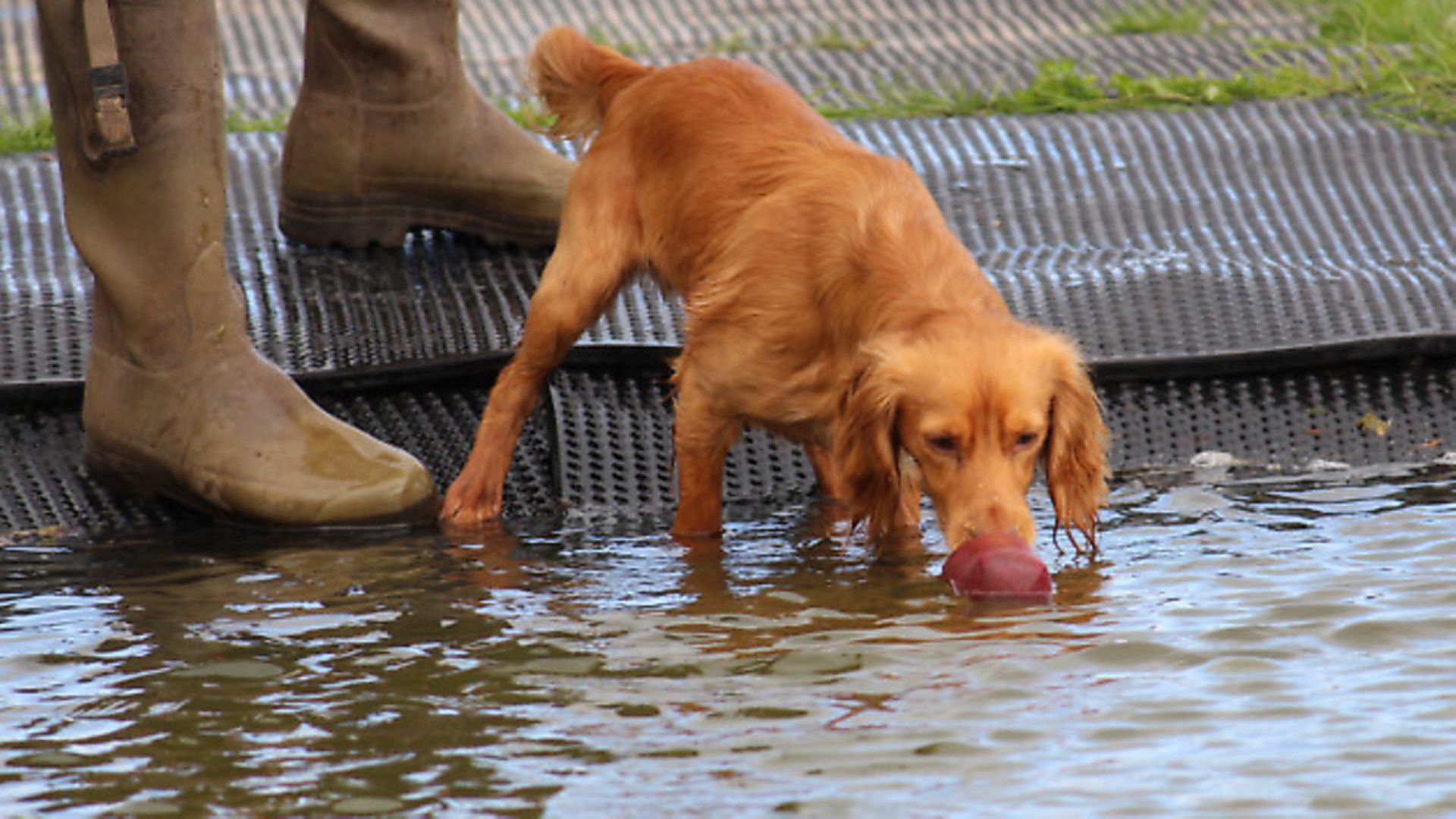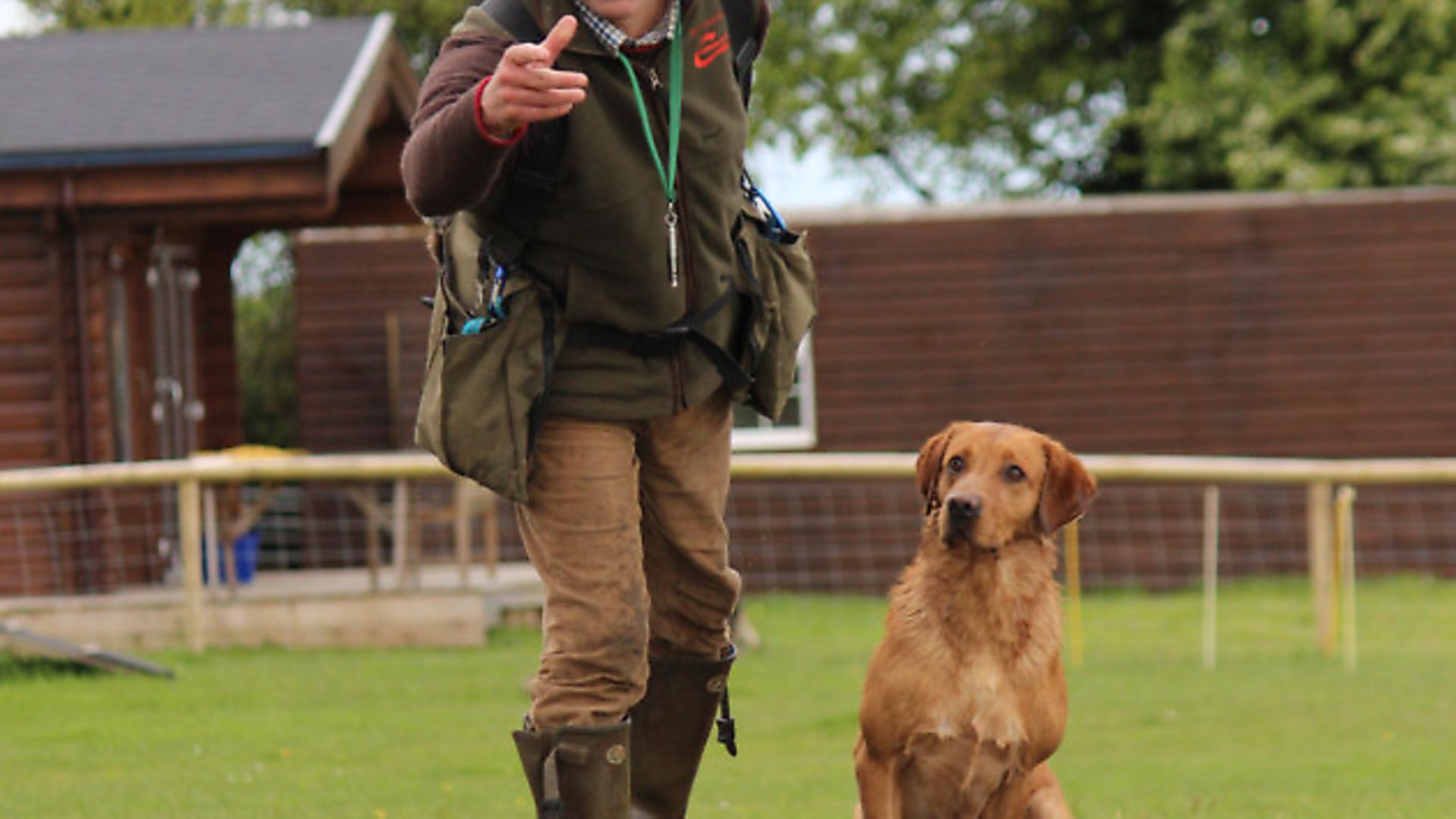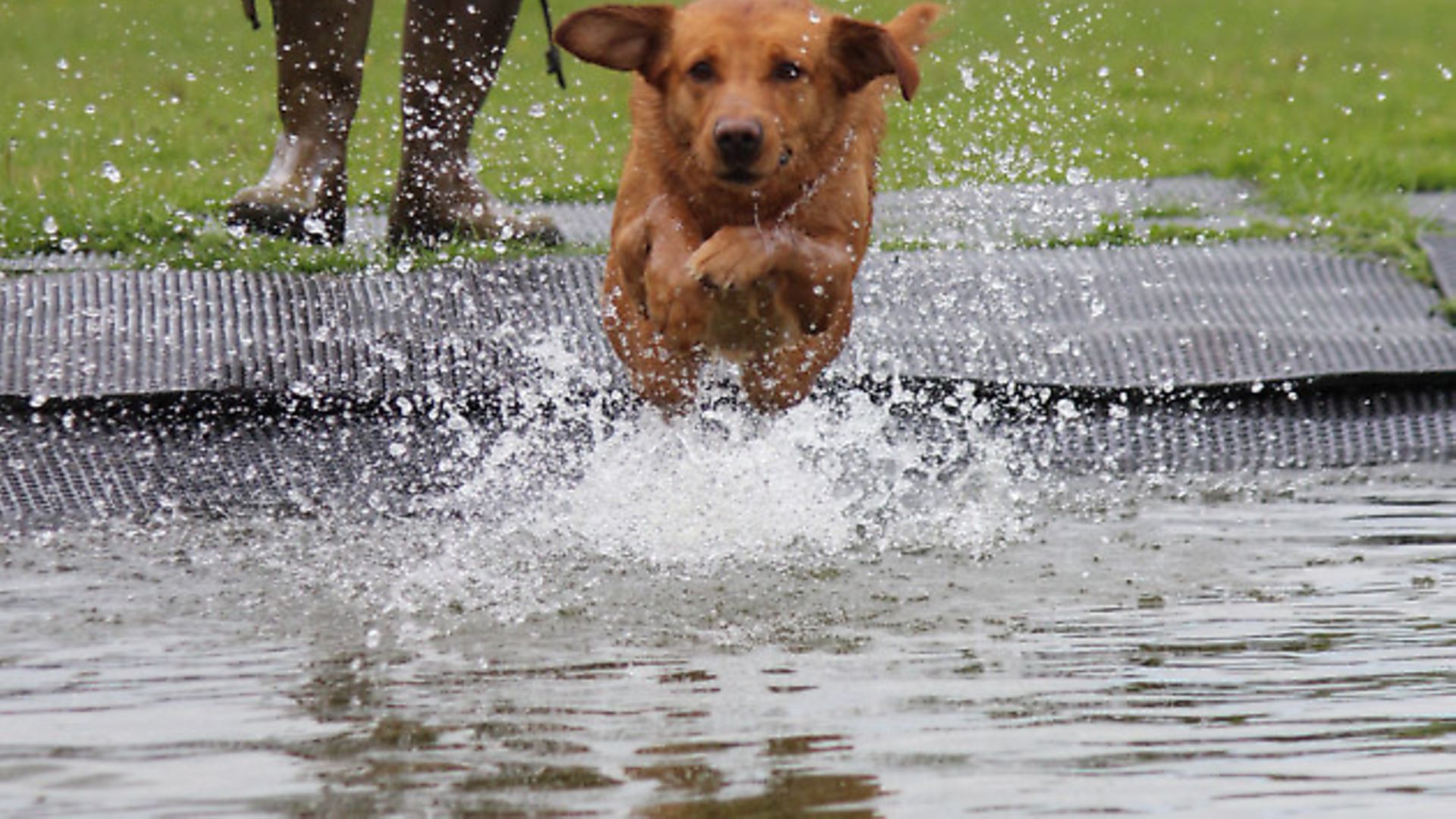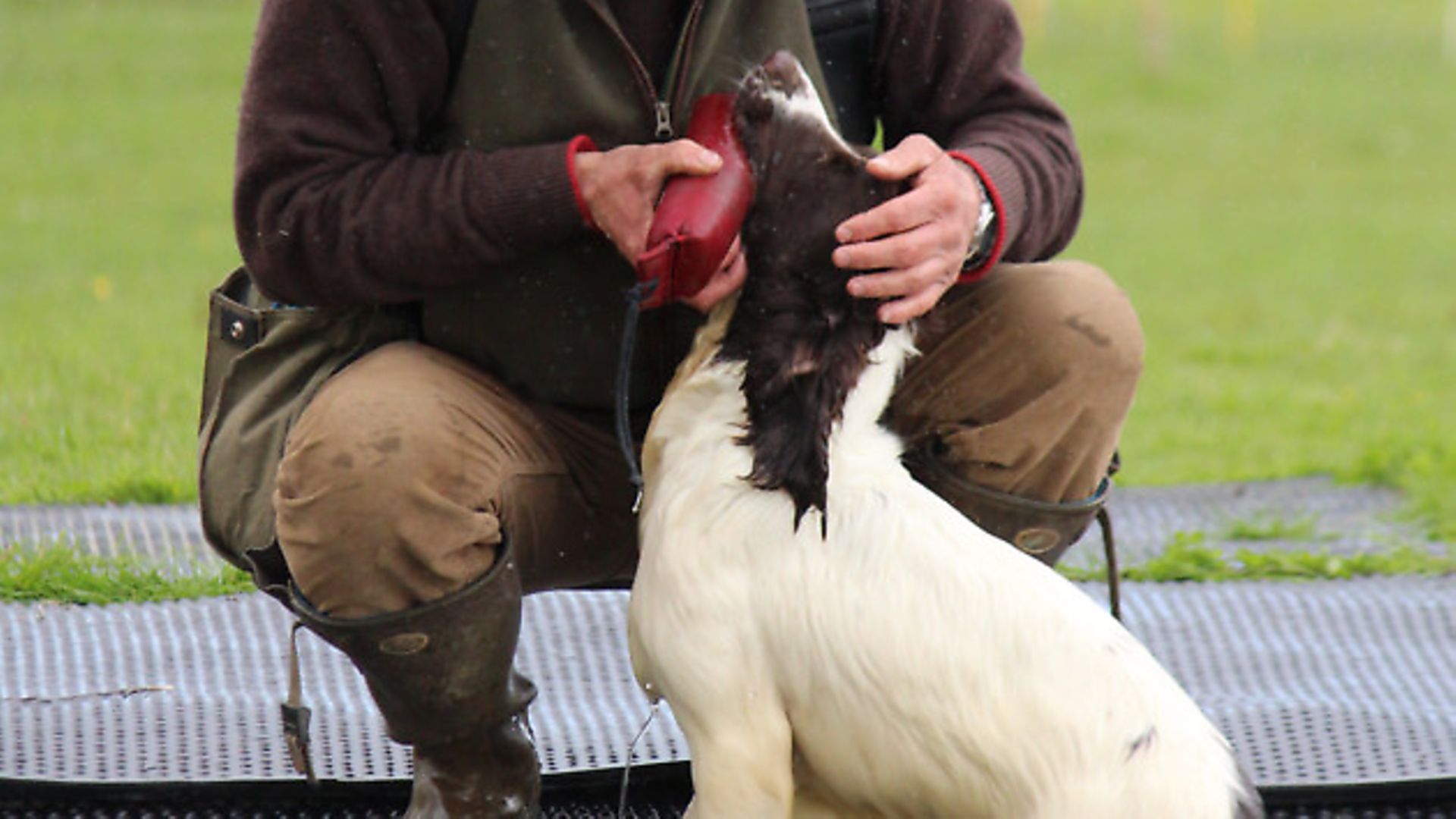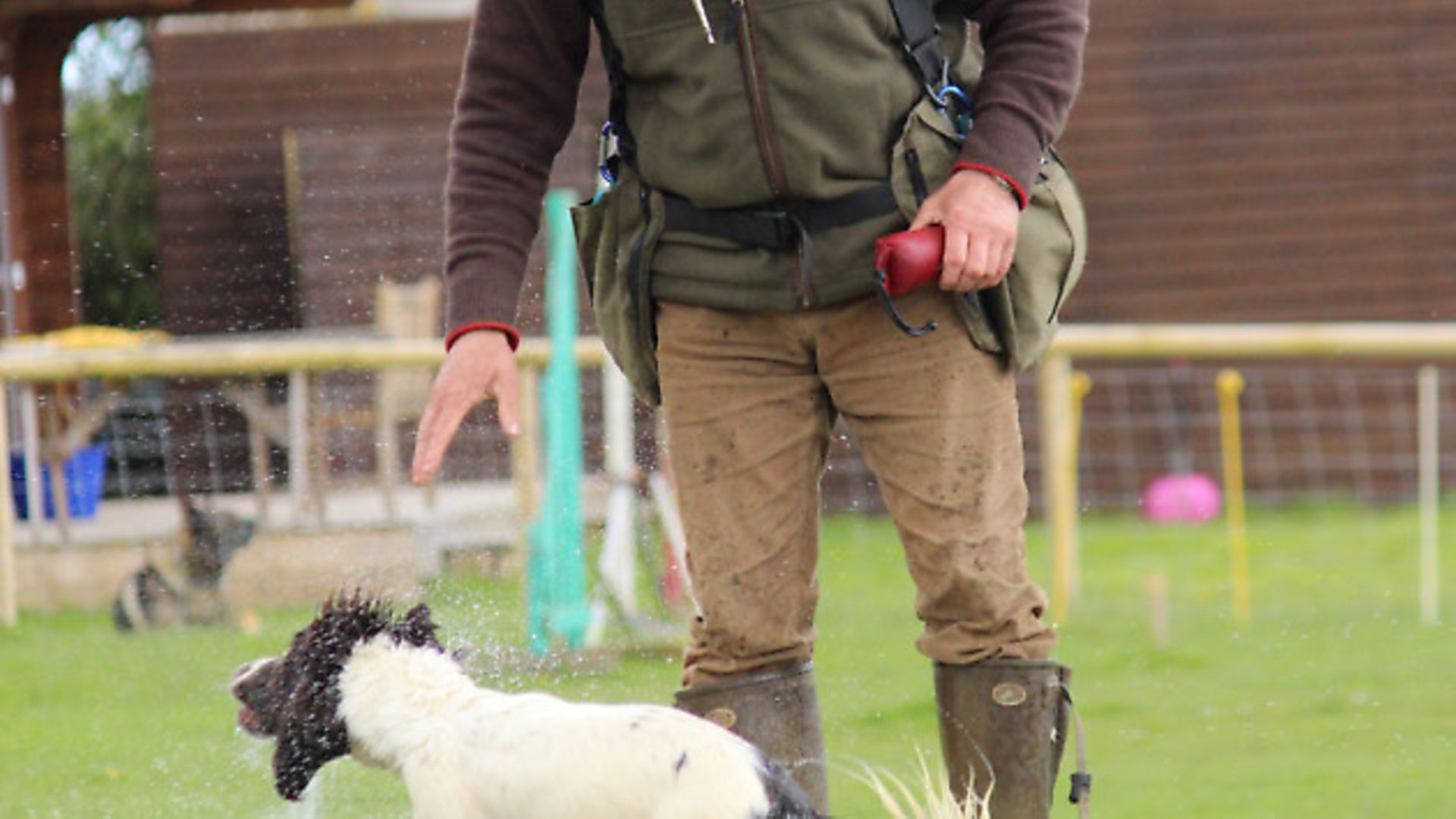What’s the best way to introduce your gundog to water?
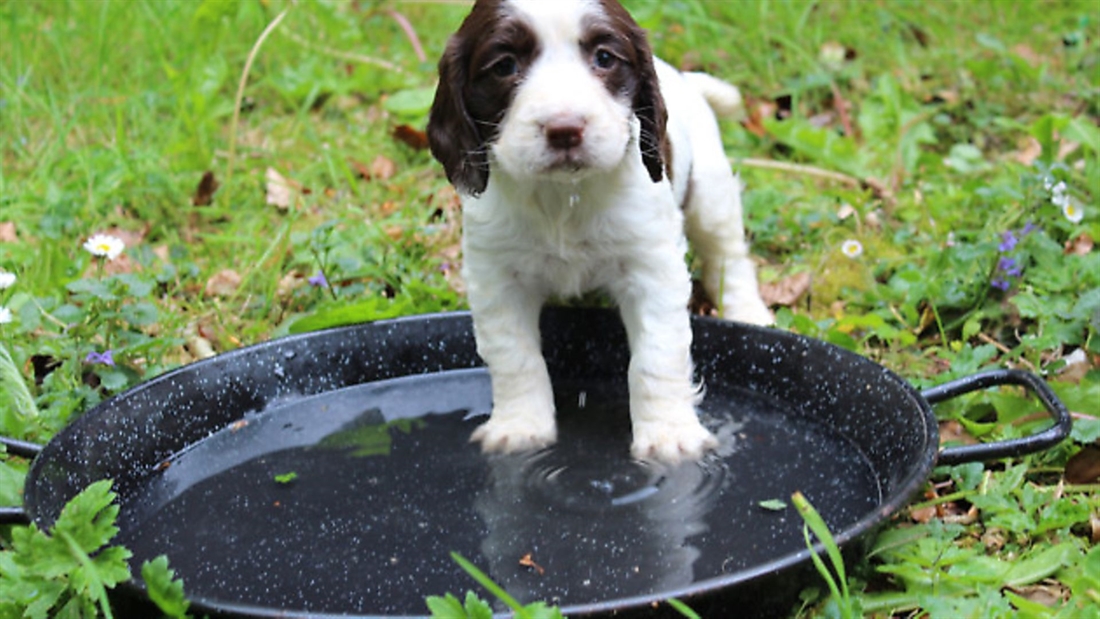
Introducing a pup or young dog to water requires a careful, considered approach. Follow Howard’s guide to get it right
Most gundogs are natural swimmers but teaching the dog to retrieve from and over water will be a necessary part of the dog’s training. That said, you should take a cautious approach to a young dog’s early introduction to water – a fright during the early months could put some off for life.
Early introduction to water can begin once you start to wean the puppies and they are up and about. A small shallow tray will allow the youngsters to learn to lap and drink water whilst the inquisitive, adventurous and clumsy nature of a young puppy will mean that they start to get their feet wet and some will play in it. It’s important to note the words ‘shallow tray’ as there is a risk that pups will get trapped in a deep bowl and could catch a chill or drown. Garden ponds are often overlooked as a source of danger to puppies; they will blunder blindly into them and more often than not are immediately out of their depth. This again could frighten the puppy and if unsupervised the pup could quickly get into serious danger.
Early stage training
When the pup is a bit older you can begin the more formal introduction to water. Choose a nice warm day and go to the trouble of finding really shallow water, ensuring that the pup can keep his feet on the bottom at all times. We want the puppy to come away from water with the lasting impression ‘wow, that was really great’, rather than ‘yuk, nasty stuff, I’m cold and my lungs are full of water.’ Expect different reactions dependant on the pup’s character; some will be as bold as brass and just plough in with no concern at all, whilst others will be reluctant and need gradual coaching. Be careful not to put too much pressure on the puppy, patience is essential. Once he has worked out where the water is drop a dummy right at the edge, gradually increasing the distance into the water until finally his feet come off the bottom. He will then have a few swimming strokes before turning round and finding the bottom again. This may take several sessions.
Doggy paddle
Everybody has heard the term ‘doggy paddle’… but be prepared! The first time the puppy’s feet leave the bottom you will see this in its pure form – a frantic paddling action on the surface of the water. Don’t worry, with time and experience this will develop into the effortless glide of a confident swimmer. The young dog will use huge amounts of energy and will exercise muscles that don’t get much use in day-to-day life, so keep swimming sessions short and gradually build them up. If you let the dog overdo it they can develop a muscle strain often called ‘swimmer’s tail’, which often appears after strenuous swimming sessions. The dog’s tail droops and can be really painful. You can avoid this with a careful build-up.
Retrieving from water
Once the dog has become a confident swimmer, we can build up his retrieving skills both from and across water. But before we get too carried away it’s important to know that a gundog is required to climb out of the water, return straight to the handler, deliver the retrieve to hand before finally shaking the water from its body. This is to reduce the risk of damage to game as the dog shakes. You will need to train the youngster to deliver then shake on command from the outset. To achieve this, meet him right on the water’s edge to take the retrieve. Even better, and where possible, get your wellies on and meet him in the water just after he gets his feet on the bottom. The dog will shake naturally soon after he gets out of he water, as he does say ‘shake’ and reward him. Gradually, by association, you can turn this into a command word. Next you can build on this behaviour by moving further and further back up the bank so that he will come straight to you and deliver the retrieve before shaking.
Going over
I like to teach my young dogs to go over water as early as possible. We want them to expect the retrieve to be on the far bank – this encourages a strong expectation in the dog to ‘get out’ and ‘get over’.
Start by sending the dog for a marked retrieve over a small stream or ditch. Distance can be built up slowly. However, don’t neglect retrieves from on the water.
We’ll need to ensure the dog learns to hunt the margins on both sides, but also to swim over and then take instruction to go back and away, up the bank and then maybe he’ll be expected to cover more ground, maybe another swim, a wall or other obstacle before being asked to hunt for a retrieve. This advanced work will require you to give your dog lots of time and experience. In earlier editions of Sporting Shooter we have discussed the fundamentals of teaching a dog to stop and take directional commands on land. If they have been well taught then most dogs will accept and understand the same commands when in water.



